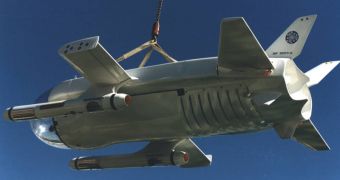In the field of oceanic exploration, submersibles, or submarines, as they're best known, are still the leaders of the pack. Alternatives to this method of exploring the depths are very rare, and most of them cannot even begin to compare to the large number of applications a submarine can be used for. For this very reason, UK inventor Graham Hawkes built the Deep Flight Super Falcon watercraft. The machine can be considered a plane in many respects, in that it does not look anything like a conventional submarine. Designed to be used by two explorers, it offers a fresh new take on the way man-made machines should travel under the waves.
“Normal submersibles have ballast systems and are nothing more than sinkers. They just treat the ocean as a vertical elevator and they typically work on the bottom on a small footprint. This one [the Falcon], instead of being a crab you drop to the bottom, is like a dolphin. It will fly off and move through the ocean with grace. It looks like a big animal moving and can do barrel rolls with whales,” Hawkes explained, and added that his machine was the only one in the world that could do that at the moment.
“This is the machine I always wanted to build for myself. It will set a new tone for access in the ocean and, hopefully, we can connect people to that part of the would like never before,” he told the BBC News in an interview. The machine, he added, could sink up to 1,500 feet (460 meters) under the waves, and could travel at about six knots, or seven miles per hour. This is a far greater speed than that of conventional submersibles, and it's all done while the explorer is placed half-way into an observation dome, made entirely of acrylic material. The standard vehicle will be powered by 12 packs of lithium polymer batteries, three placed on each side of the divers, as they sit in the craft lying on their bellies.
The 4,000-pound machine, which is a great deal lighter than any of its competitors, is able to glide back to the surface on its own, if an accident is to happen at great depths. In addition, the pressure inside the cockpits will always remain at one atmosphere, the ideal amount for humans. According to Hawkes, it will cost about $1.5 million to buy, a cost in the same price range as a very light jet. American venture capitalist and billionaire Tom Perkins has already purchased one for himself.

 14 DAY TRIAL //
14 DAY TRIAL //